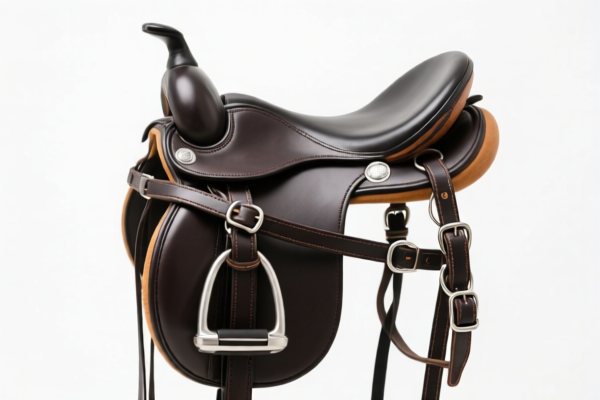| HS Code | Official Doc | Tariff Rate | Origin | Destination | Effective Date |
|---|---|---|---|---|---|
| 7009100000 | Doc | 58.9% | CN | US | 2025-05-12 |
| 7009911010 | Doc | 62.8% | CN | US | 2025-05-12 |
| 7020006000 | Doc | 60.0% | CN | US | 2025-05-12 |
| 7020003000 | Doc | 55.0% | CN | US | 2025-05-12 |
| 8306300000 | Doc | 82.7% | CN | US | 2025-05-12 |
| 8304000000 | Doc | 33.9% | CN | US | 2025-05-12 |
| 8304000000 | Doc | 33.9% | CN | US | 2025-05-12 |
| 9403991040 | Doc | 80.0% | CN | US | 2025-05-12 |
| 8310000000 | Doc | 55.0% | CN | US | 2025-05-12 |
| 9405490000 | Doc | 58.9% | CN | US | 2025-05-12 |
| 9405994090 | Doc | 86.0% | CN | US | 2025-05-12 |
| 8708998180 | Doc | 57.5% | CN | US | 2025-05-12 |
| 8714998000 | Doc | 47.5% | CN | US | 2025-05-12 |




Mirror Housing
A mirror housing, also known as a mirror casing or mirror shell, is a protective and often decorative enclosure for a vehicle’s side mirrors. It serves both functional and aesthetic purposes.
Material
Mirror housings are typically constructed from:
- Plastic: Most common due to its lightweight nature, impact resistance, and cost-effectiveness. Common plastics include ABS (Acrylonitrile Butadiene Styrene), Polypropylene (PP), and Polycarbonate (PC).
- Metal: Often found in higher-end vehicles or as aftermarket upgrades. Materials include aluminum, stainless steel, and chrome-plated alloys. Metal housings offer increased durability and a premium appearance.
- Carbon Fiber: Used in performance or custom applications, offering significant weight reduction and a sporty aesthetic.
Purpose
- Protection: Shields the internal mirror mechanism (glass, motors, heating elements) from weather, debris, and physical impacts.
- Aerodynamics: Streamlined designs can reduce drag and wind noise.
- Aesthetics: Contributes to the vehicle’s overall appearance and can be customized with different finishes, colors, and styles.
- Integration: Houses components like turn signal indicators, blind-spot monitoring sensors, and puddle lights.
Function
The housing provides a secure mounting point for the mirror glass and the assembly that allows for adjustment. It also contains the electrical connections for features such as:
- Power Adjustment: Allows the driver to remotely adjust the mirror position.
- Heating: Defrosts the mirror surface in cold weather.
- Turn Signal Repeaters: Provides additional visibility to other drivers.
- Blind Spot Monitoring: Accommodates sensors that detect vehicles in the driver’s blind spots.
- Auto-Dimming: Automatically darkens the mirror to reduce glare from headlights.
Usage Scenarios
- Factory Equipment: Original equipment on vehicles, designed to match the vehicle’s specifications.
- Replacement Parts: Used to repair or replace damaged mirror housings.
- Customization: Aftermarket housings used to change the vehicle’s appearance or add features.
- Performance/Off-Road: More rugged housings designed to withstand harsh conditions.
Common Types
- Standard Housings: Basic housings without additional features.
- Heated Housings: Include heating elements to defrost the mirror.
- Power-Adjustable Housings: Allow for remote adjustment of the mirror position.
- Turn Signal Housings: Integrated with turn signal indicators.
- Blind Spot Monitoring Housings: Accommodate sensors for blind spot detection.
- Chrome Housings: Feature a chrome-plated finish for a premium appearance.
- Carbon Fiber Housings: Lightweight housings with a sporty aesthetic.
- Tow Mirror Housings: Extended housings designed for towing trailers, providing a wider field of view.
Mirror housings are enclosures designed to protect mirrors, typically used in vehicles for rear-view visibility or in other applications requiring mirror protection. The classification depends on the material, specific function, and application.
Here are relevant HS codes based on the provided reference material:
- 7009100000: Glass mirrors, whether or not framed, including rear-view mirrors: Rear-view mirrors for vehicles. This code applies specifically to rear-view mirrors used in vehicles, which would include the glass mirror component itself. The total tax rate is 58.9% (Basic tariff: 3.9%, Additional tariff: 25.0%, Post-April 2, 2025, additional tariff: 30.0%).
- 8306300000: Bells, gongs and the like, nonelectric, of base metal; statuettes and other ornaments, of base metal; photograph, picture or similar frames, of base metal; mirrors of base metal; and base metal parts thereof: Photograph, picture or similar frames; mirrors; and parts thereof. This code covers mirrors made of base metal, and potentially parts thereof, including housings if constructed from base metal. The total tax rate is 82.7% (Basic tariff: 2.7%, Additional tariff: 25.0%, Post-April 2, 2025, additional tariff: 30.0%, plus a 25% additional tariff on steel and aluminum products).
- 8708998180: Parts and accessories of the motor vehicles of headings 8701 to 8705: Other parts and accessories: Other: Other: Other: Other. This code is applicable to other parts and accessories for motor vehicles, which could include mirror housings if they are specifically designed for vehicle use. The total tax rate is 57.5% (Basic tariff: 2.5%, Additional tariff: 25.0%, Post-April 2, 2025, additional tariff: 30.0%).
- 9403991040: Other furniture and parts thereof: Parts: Other: Of furniture of a kind used for motor vehicles Of metal. If the mirror housing is considered a part of motor vehicle furniture made of metal, this code may apply. The total tax rate is 80.0% (Basic tariff: 0.0%, Additional tariff: 25.0%, Post-April 2, 2025, additional tariff: 30.0%, plus a 25% additional tariff on steel and aluminum products).
Regarding HS code 8306300000 and 9403991040, please note the need to verify the material (specifically steel or aluminum) as these materials incur an additional 25% tariff.
Customer Reviews
No reviews yet.